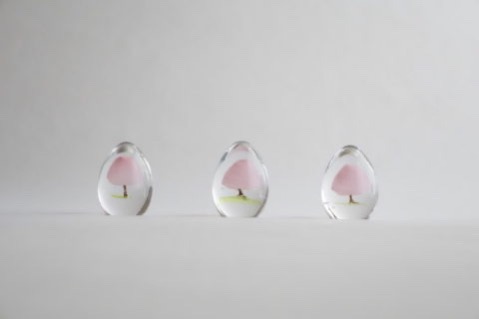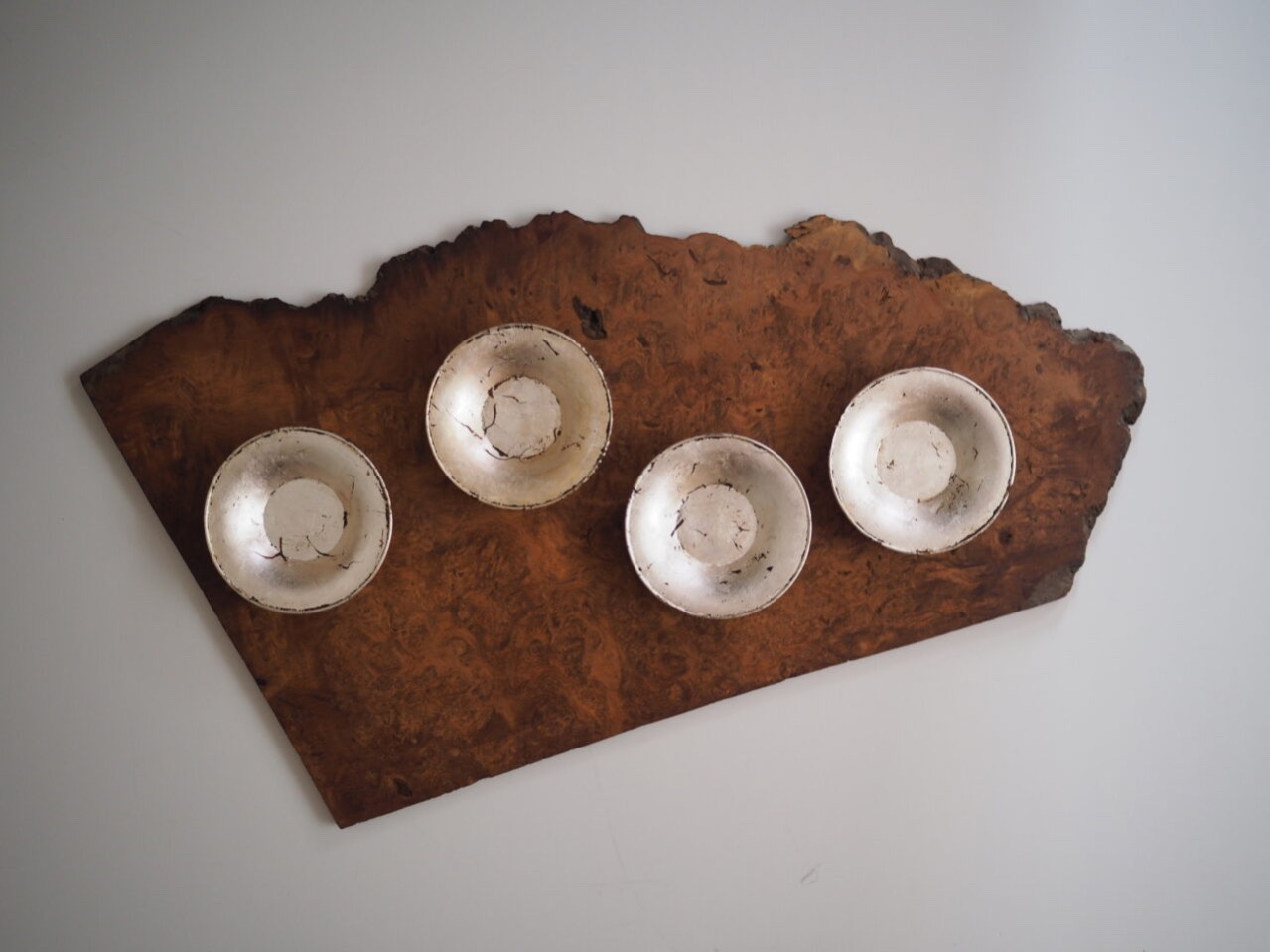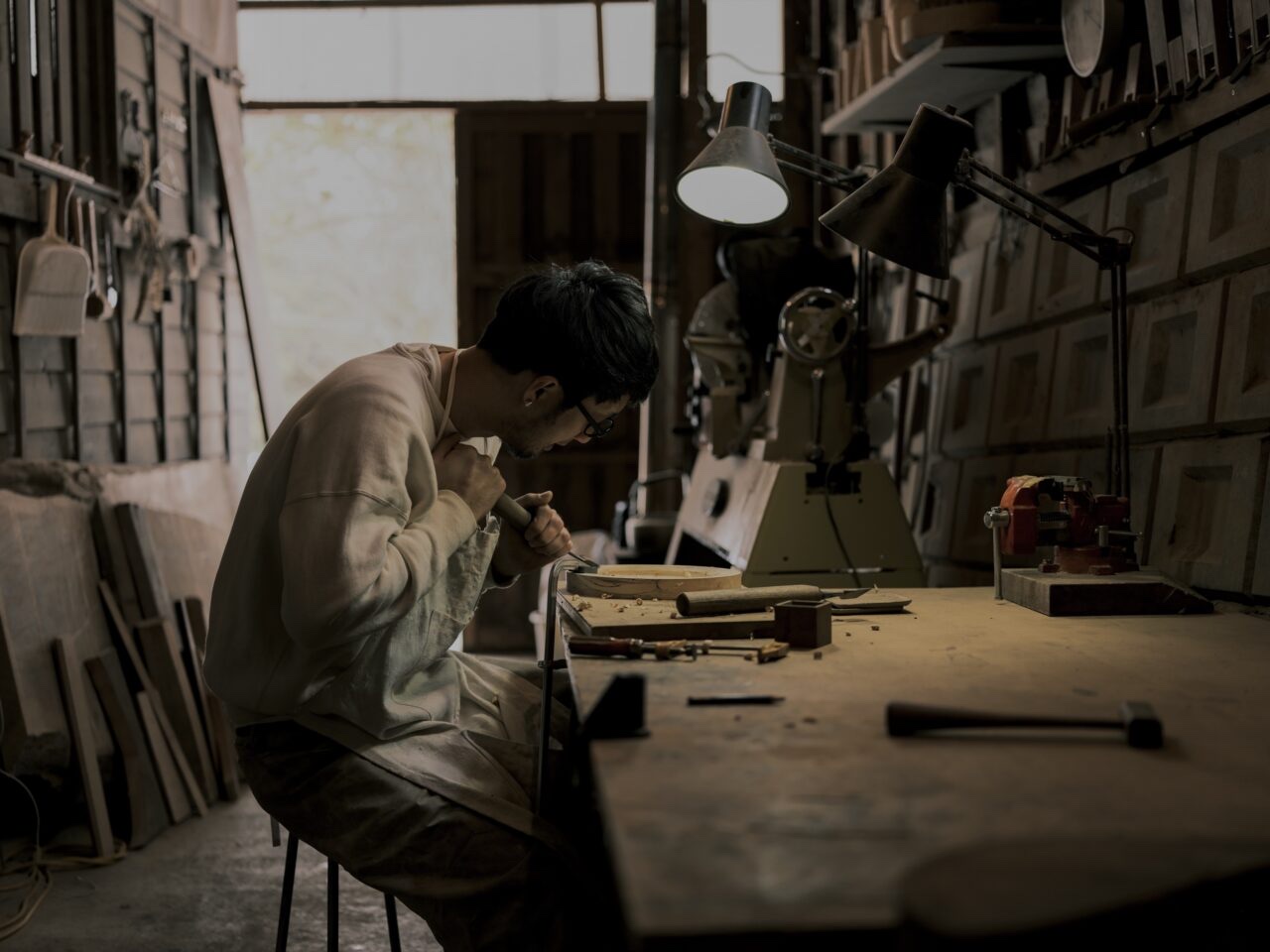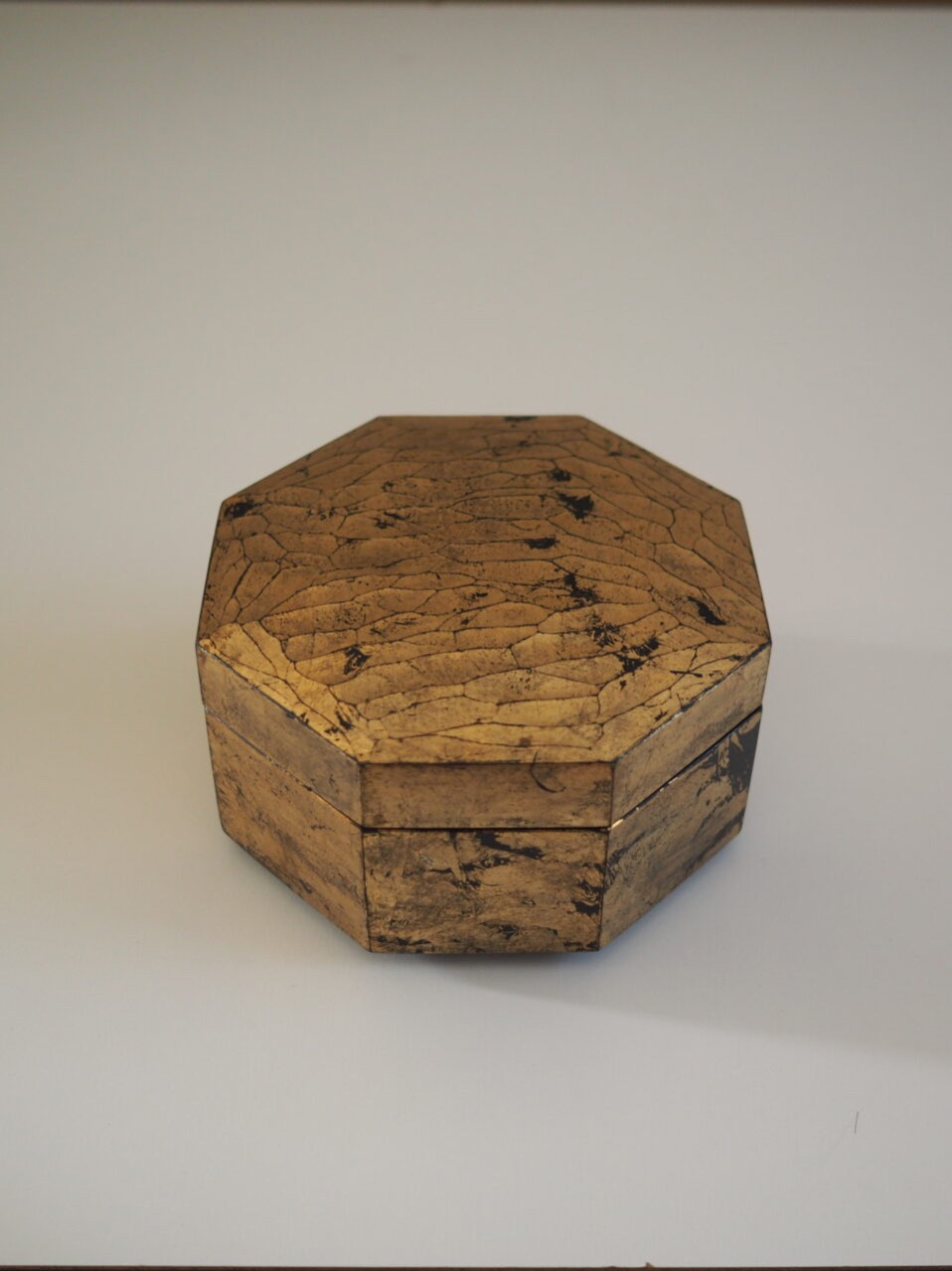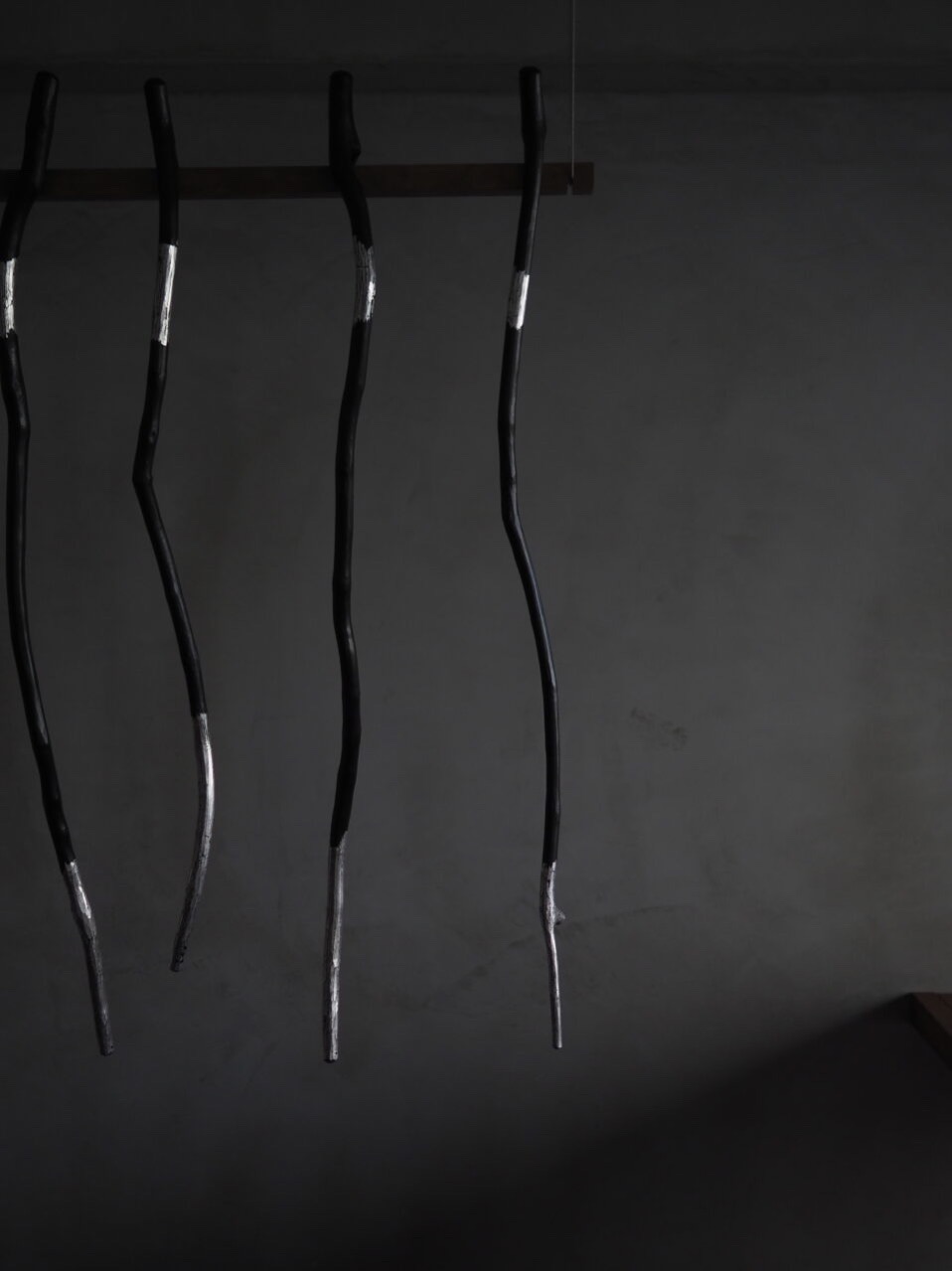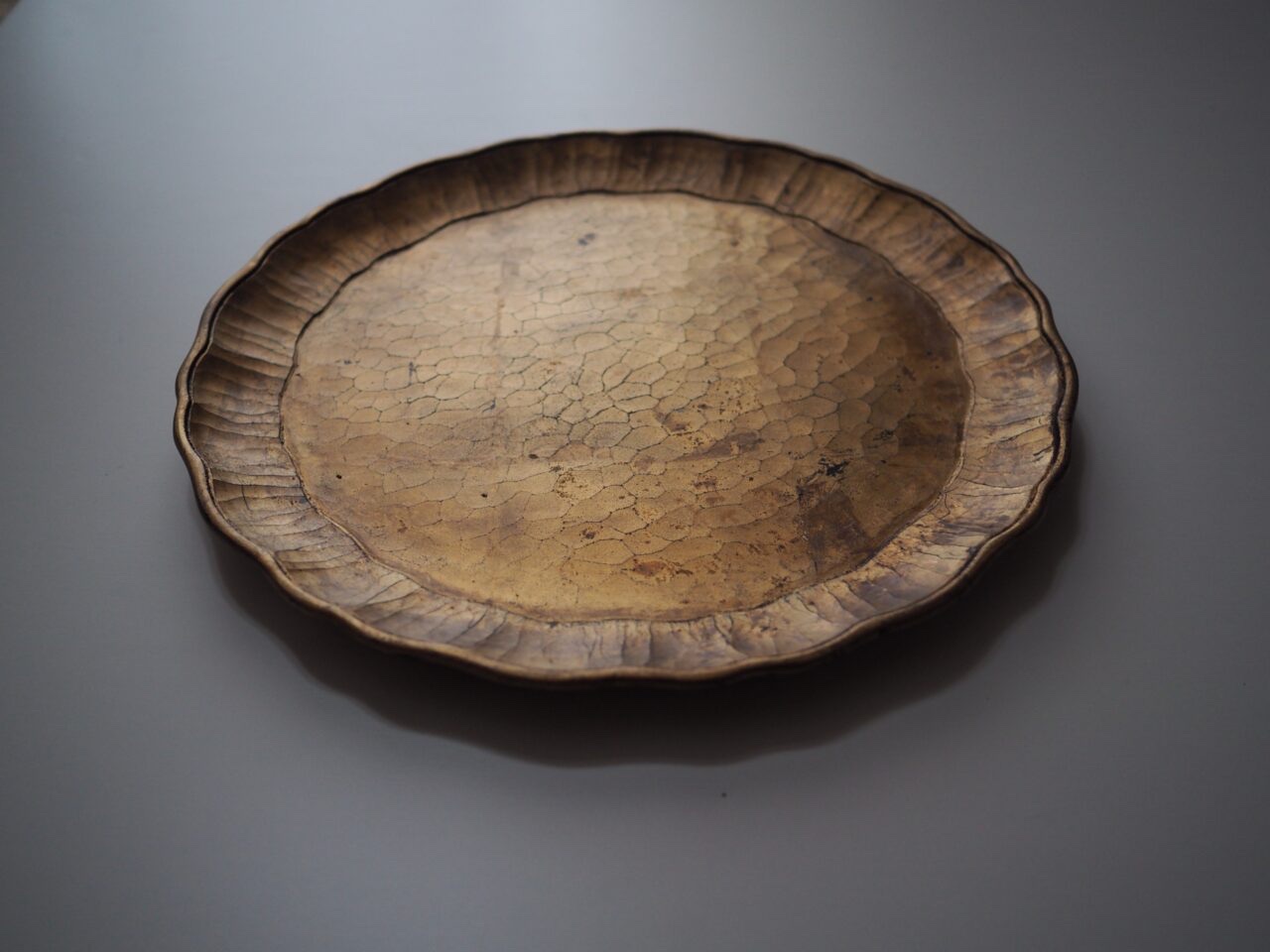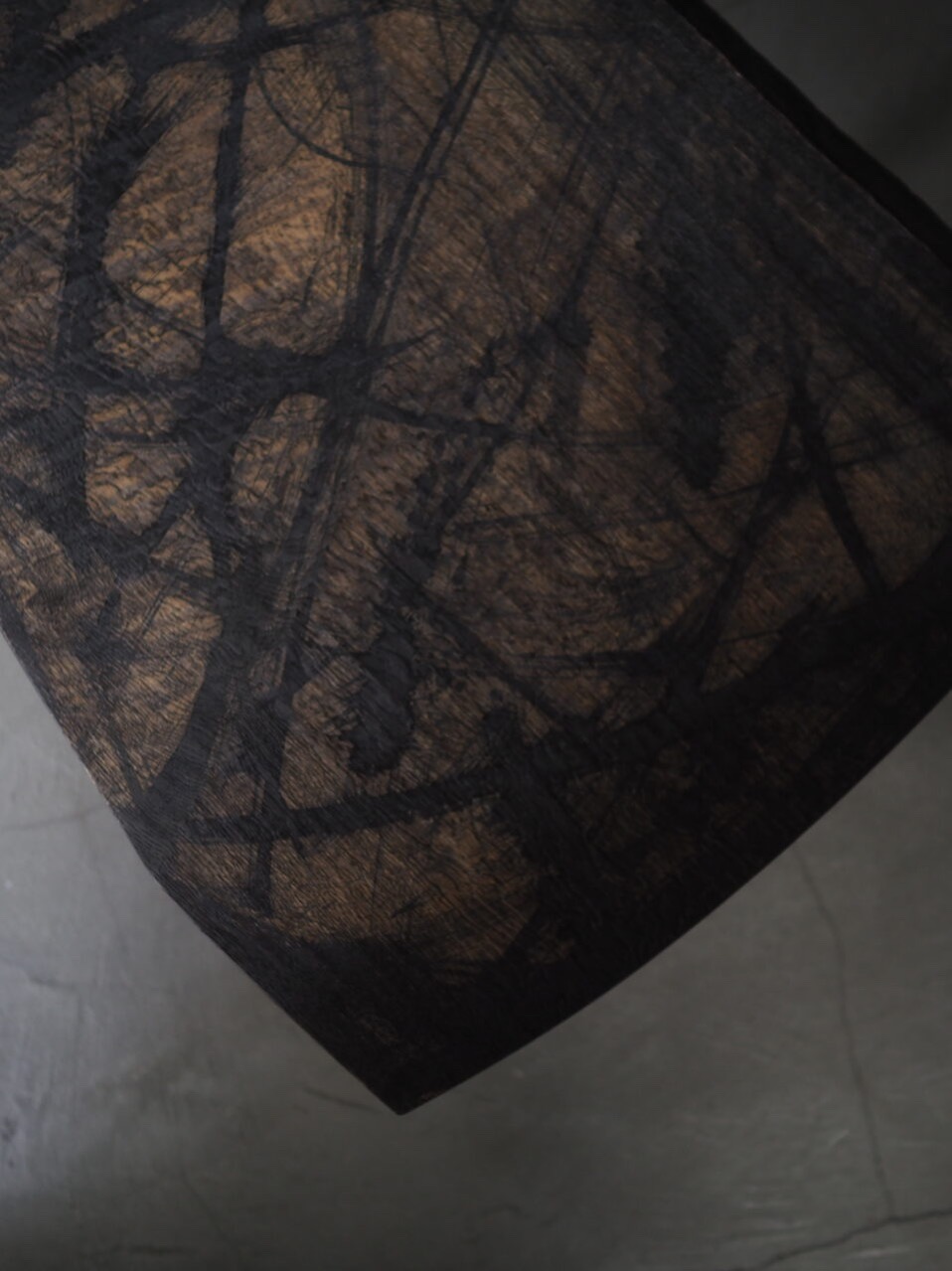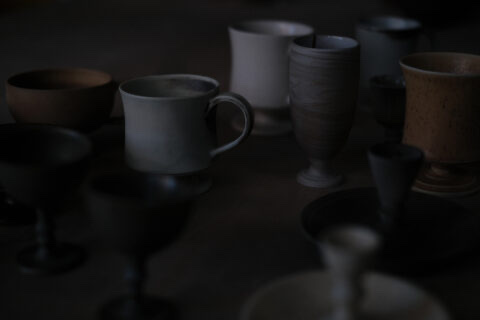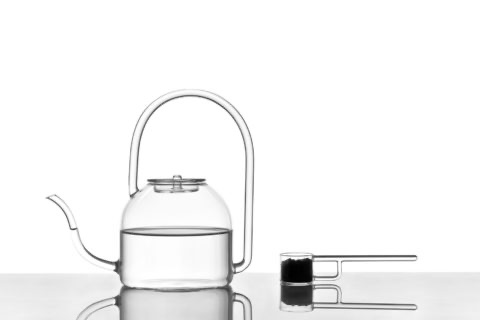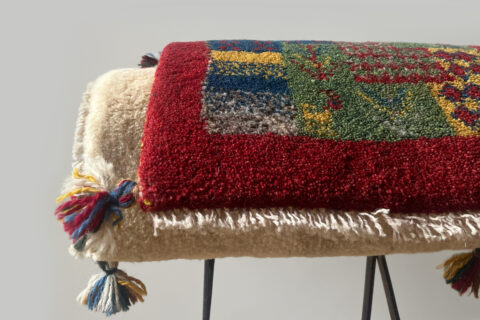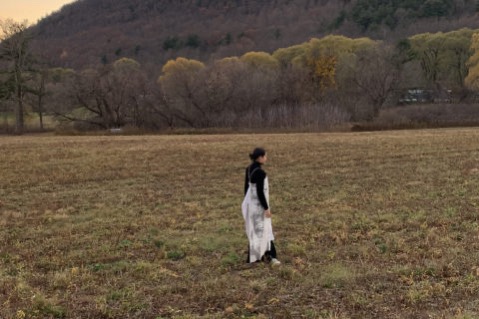靜物,指的是靜止不動的物件,好像是靜物寫生和靜物攝影,具像地呈現物件的本質。物件獨自安靜地在一旁,不作半點聲響,不爭艷卻散發出獨特的氛圍。「最近正忙於製作把造型美和功能縮至最小的工藝品,我把它們統稱為『靜物』。」日本木工家浦上陽介的作品就是這樣的一種存在,古樸安靜的氣氛,彷彿讓時間凝住在歷史裡,人們在時間的狹縫裡感受靜物的美,不徐不疾。
以木材為主要材料,加上漆、箔,以及打磨粉飾的工藝,使作品帶有古樸而華麗的質感,如古物般充滿歲月的痕跡。有時候作品表面甚至帶點腐爛、生鏽或破裂,但仍無損它的溫暖優雅,也為靜物添上鮮活的生命力。「箔對我來說就像化妝品一樣,它可以為木材和漆帶來恰到好處的潤飾。箔的運用也算是一種情感的轉移,留下創作者的印記。」浦上陽介早前在Contempory Craft Centre開展了「Sliver Lining」的個人展覽,正是以箔為重點元素。在木材製作的器皿上貼上閃亮的箔,讓樹木的紋理更深刻明顯,偶然的深淺不一、磨損脫落,對浦上來說,是一種感性的存在。「我認為『裝飾』能夠滲透出我感性的一部分。」上箔的方式、位置、打磨的程度,都是一種直覺,對物件感性的理解。「關於實用與裝飾,就好比眼前的一塊平木板,既可作器皿,也可作為裝飾,甚至能作為書櫃的分隔板。」
浦上創作的茶具,也存在著這種曖昧不明、由使用者自行演繹的想法。「我對茶道的認識不算深厚,但我的作品與茶道的精神卻有著相似之處。茶具有『見立』的概念,即將事物當作另一事物看待。我的作品也有這樣的特徵,在製作時也能成為一種依靠。始終,我認為一件作品與使用者我距離是很重要的。」透過作品讓使用者思考物品的使用方法,這種人與物品的互動也是藝術的一種吧。
由體積較大櫸木托盤,到用樹皮製成的薄薄墊子都充滿了手造的細緻痕跡,只是安靜地放在一旁,已美得像一幅靜物畫。在浦上的作品中,總是不乏盒子的蹤影,為甚麼喜歡創作盒子呢?「同一器皿,在不同國家和場合都會產生不同的用途,所以我想製作不受國界影響的盒子。盒子也能夠凝聚我的技術,是一種感性的載體。」把東西放進浦上造的盒子裡,想必是讓人珍而重之的東西吧。
浦上陽介成為木工的契機是他在東京求學期間認識了一位師匠。「木製家具的感染力和工匠用心細緻的技術讓我深深地對木製品著迷。」學藝時期影響他甚深,令他處理木材的每一步都受學藝時所掌握的知識和技術所影響。「當時的我,經常思考木材如何地影響著地球和人類,這種想法也是推動我持續創作的精神支柱。」經歷十年的學藝,然後獨立出道,浦上沒有繼續做大型的家具,相反地,他做起體積較小的盒子和器物來。「由於工作室的面積有限,也沒有豐富的材料可用,所以未能製作大型家具。加上,學藝時曾造過盒子和器皿,自然而然地成為現在主要的創作類型。「這是既省煩惱又切合當前處境的木工製作呢。」
出生於長崎縣五島列島的浦上選擇在東北設立工作室,這是因為這裡的人和樹木的距離很親近。「東北地區擁有很多與森林和樹木相關的習俗和祭典,並擁有深厚的木文化。移居東北後,我學會了很多關於漆的運用,以及木工旋盤的技術等等。」對浦上來說,漆是製作器皿不可或缺的素材,而漆很適合在日本的氣候下使用。在日本,漆與木材很自然便會走在一起,成為最常見的配搭。
浦上曾說他的作品不只是被大眾廣泛接納的東西,更是少數人愛不釋手的東西。「我希望我的作品對一些人來說,是一種不可或缺的存在。它們能夠觸動人心,成為一種獨特的存在。」帶著這種想法來創作,讓浦上的作品更富感染力,猶如一幅靜物畫,省略複雜的背景,靜物永遠是畫紙上的主角。
Inanimate objects are those that sit motionless. Their figurative representation can be seen in still life paintings or still life photography. These inanimate objects sit alone, quietly. Nothing ostentatious, yet there is something unique about them. “I am quite busy lately crafting a series called, Still Life, that is minimal in terms of form and functionality.” The work by Japanese woodworker Yosuke Urakami presents itself with a sense of tranquility and quaintness that, somehow, withstands the passing of time. The beauty of still life objects exudes amidst the stillness of time.
Wood is used as the major material, and there is the addition of lacquer and foil, as well as proper sanding to create a quaint yet rich texture in his work. They are like antiques with perfect traces of time. Sometimes the surface is a little rotten, rusted, or even cracked, adding a sense of vibrancy and liveliness to the work which is already warm and elegant. “Foil, to me, is like cosmetics. It gives the right finish to wood and lacquer. The use of foil is also an emotional transfer because it leaves a footprint of the creator.” Recently, Yosuke Urakami held his solo exhibition, Sliver Lining, at the Contemporary Craft Centre that centers on foil.
Applying a shiny foil to the wood pieces can better reveal the grain patterns; sometimes the patterns are stronger, sometimes less pronounced. At times, the foil falls off. To Urakami, foil makes a sensible presence. “I think through ‘decoration’ a part of my sensibility can be revealed.” Where and how to place the foil, and how much sanding and polishing is required is all about intuition and the sensible understanding of the object. “When it comes to practicality and decorating, a wooden board can be used as a utensil or a decoration, and even as a divider for a bookcase.”
Such ambiguity can be found in the tea set created by Urakami. “I don’t know much about sado (which literally means “the way of tea”), but I believe my work shares some similarities with it. There is this concept of Mitate in sado which is about seeing one thing as another thing. My work has a characteristic just like that. Such belief has become a comfort when I create. After all, I think the distance between a piece of work and the user matters a lot.” Inspiring the users to think about the use of an object through the object itself might well be a form of art.
Whether it’s the big bulky beech wood tray or the paper-thin cushion made of bark, traces of meticulous craftsmanship can be easily spotted. For when they sit still and quietly, it’s as beautiful as if it’s a still life painting. Boxes can always be found in Urakami’s collections. But why boxes? “The same vessel can serve different purposes in different countries and occasions. I want to create a box that is not bounded by national borders. Also, a box is a testament of my skills and a kind of emotional carrier.” Whatever that is placed in the box created by Urakami must be something deeply cherished by the owner.
It was an encounter with a master craftsman that took place when Urakami was studying in Tokyo that inspired him to become a woodworker. “I was deeply fascinated by wooden furniture and the meticulous techniques of craftsmen.” The apprenticeship had a great impact on Urakami and the knowledge and skills he learnt from his master deeply influenced how he handled wood in the years to come. “At that time, I often thought about how wood affects the earth and human beings. The idea of it keeps my creative process going.” Urakami spent ten years as an apprentice before debuting as a solo artist, and instead of making big furniture, he opted for small items such as boxes and utensils. “Because of the limited space in my studio and also a lack of materials, it wasn’t possible for me to make big furniture; and it so happened that I made boxes and utensils when I was still an apprentice, it came kind of naturally for me to focus on them. “It’s the kind of woodworking that is least hectic that fits my current situation perfectly.”
Born in the Goto city in Nagasaki Prefecture, Urakami chose to set up his studio in the Tohoku region because of its proximity to trees. “There are many customs and festivals related to forests and trees in the Tohoku region and a profound culture centered on wood. Since moving to Tohoku, I’ve learned a lot about lacquer and woodturning.” For Urakami, lacquer is indispensable in utensils making and suitable for the Japanese climate. As a matter of fact, lacquered woodwork is commonly found in Japan.
Urakami believes that his work is not only loved by the general public, but also deeply treasured by a few. “I hope that my work can make an indispensable existence in some people’s lives in a way that they can touch people’s hearts and be unique to them.” With such a hope in mind, Urakami continues to create work that is compelling and thoughtful. As if in a still life painting, the inanimate object will always catch your attention no matter how complex its surrounding is.
